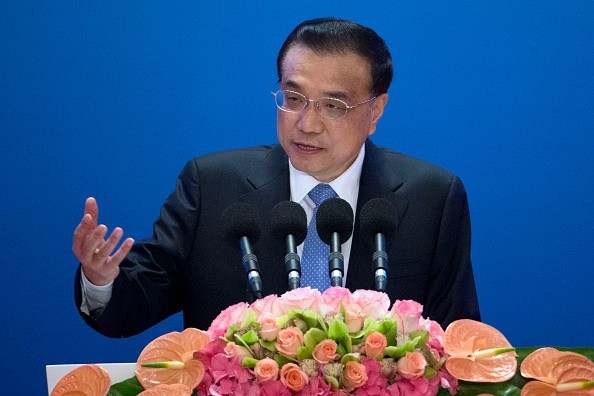China’s Anti-Poverty Budget to Increase by 43.4%; Aims to Lift 10 Million Citizens from Poverty Within the Year
| Jenia Cane | | Mar 12, 2016 04:20 AM EST |
(Photo : Photo: Mark Schiefelbein - Pool/Getty Images)
China's poverty alleviation budget will increase by 43.4 percent this year, a move that is expected to lift at least 10 million people from the throes of poverty by the end of this year.
This was announced by Premier Li Keqiang in his government work report delivered last Saturday, reported the China Daily.
Like Us on Facebook
With its promise "not to leave a single family behind," the Central Government envisions to uplift the living conditions of at least 55 million poor rural folk in the next five years.
This is in line with the China government's goal of reducing the country's poverty level, and building a moderately progressive prosperous society by 2020.
In November, 22 provincial, autonomous region and city leaders coming from Central and Western China signed a signed a "responsibility agreement" with the Central government, in which they agreed to be evaluated.
Legislators who participated in the two sessions also threw their full support behind the initiative.
"The remaining 55 million are the poorest and most difficult group," noted Fan Xiaojian, a member of the 12th National Committee of the Chinese People's Political Consultative Conference.
Fan, who leads a State Council panel on poverty alleviation, however explained that China's slower economy, decreasing natural resources, environmental degradation and "repoverty" (the return to poverty) have put pressure on the Central Government in achieving its poverty reduction target.
The Chinese Government hopes to address these challenges through its proposed 13th Five-Year Plan, which identifies the nation's development priorities from 2016 to 2020.
In particular, the draft plan proposes support for poor villages in order to help them develop their own featured products and services.
To empower these impoverished communities, the plan highlighted e-commerce as a key tool to enable villagers to sell their wares; utilize photovoltaic technology to boost infrastructure construction; and boost rural tourism to attract more visitors.
According to official data, China has already lifted about 700 million people out of poverty over the past four decades, with of 95.5 million people in the countryside overcoming poverty from the period 2011 to 2014.
Tagschina, China poverty, Premier Li Kequiang, Chinese government
©2015 Chinatopix All rights reserved. Do not reproduce without permission
EDITOR'S PICKS
-

Did the Trump administration just announce plans for a trade war with ‘hostile’ China and Russia?
-

US Senate passes Taiwan travel bill slammed by China
-

As Yan Sihong’s family grieves, here are other Chinese students who went missing abroad. Some have never been found
-

Beijing blasts Western critics who ‘smear China’ with the term sharp power
-

China Envoy Seeks to Defuse Tensions With U.S. as a Trade War Brews
-

Singapore's Deputy PM Provides Bitcoin Vote of Confidence Amid China's Blanket Bans
-

China warns investors over risks in overseas virtual currency trading
-

Chinese government most trustworthy: survey
-

Kashima Antlers On Course For Back-To-Back Titles
MOST POPULAR
LATEST NEWS
Zhou Yongkang: China's Former Security Chief Sentenced to Life in Prison

China's former Chief of the Ministry of Public Security, Zhou Yongkang, has been given a life sentence after he was found guilty of abusing his office, bribery and deliberately ... Full Article
TRENDING STORY

China Pork Prices Expected to Stabilize As The Supplies Recover

Elephone P9000 Smartphone is now on Sale on Amazon India

There's a Big Chance Cliffhangers Won't Still Be Resolved When Grey's Anatomy Season 13 Returns

Supreme Court Ruled on Samsung vs Apple Dispute for Patent Infringement

Microsoft Surface Pro 5 Rumors and Release Date: What is the Latest?













